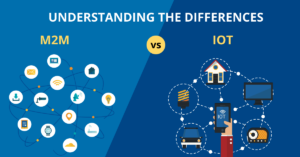AI-enabled autopay systems leverage advanced machine learning algorithms to automate payment processes and make transactions faster and more efficient. Due to their ability to streamline operations and reduce human error, these systems are increasingly becoming integral in the retail, finance and health care sectors.
However, as your reliance on these technologies grows, it’s crucial to address security concerns to maintain trust and protect the integrity of your data. Ensuring robust security measures are in place safeguards sensitive information and upholds the reliability and effectiveness of these innovative systems.
“ About 39% of consumers use an automatic payment system to handle recurring monthly bills. This trend underscores how convenient and integral these tools have become in streamlining personal finance management for many.”
What Are AI-Enabled Autopay Systems?
AI-enabled autopay is a system that automatically transfers money from your account to pay a recurring bill on a predetermined date, such as your monthly utility or subscription service fees. These programs leverage AI to schedule payments and optimize the process to ensure efficiency and accuracy. The core AI technology behind this is often machine learning, which helps detect unusual patterns or potential fraud, adding a layer of security that manual processes can’t match.
The benefits of using this system are significant. It offers the convenience of “set it and forget it” payments, ensuring you never miss a due date. It also enhances the overall efficiency of managing your finances.
Additionally, automating your payments saves money by avoiding processing and late fees, which can add up over time. Likewise, this program saves you the time and effort involved in manual payment setups. It also allows you to focus on other essential aspects of your life.
Common Security Threats in AI-Enabled Autopay
One significant security threat to AI-enabled autopay systems is the risk of data breaches. Unauthorized parties can intercept sensitive information, such as your banking details and personal data. These breaches can result from various vulnerabilities within the system, ranging from weak passwords to sophisticated cyberattacks.
Another AI-specific threat involves adversarial attacks, which can manipulate machine learning models. Attackers can trick the system into making incorrect decisions by subtly altering the input data to these models. This could lead to unauthorized transactions or exposure of private data.
In 2023, a startling example of these threats came to light when 29 malware families targeted 1,800 banking apps across 61 countries. This widespread attack underscores the global scale and sophistication of threats facing digital payment systems.
Such incidents can severely compromise your financial security by enabling unauthorized access to your accounts or fraudulent transactions. Understanding these risks is crucial, highlighting the need for robust security measures to protect your financial assets and personal information in an increasingly digital world.
“ In 2023, 39% of consumers use in the U.S. targeted the financial services sector. This means institutions handling your financial transactions were prime targets. It highlights the critical need for robust security measures to safeguard financial activities against such disruptions.”
Best Practices for Enhancing Security
Encryption techniques are crucial to safeguard your data during transmission. Encoding your data ensures the information remains unreadable to unauthorized parties even if intercepted.
This method secures everything from payment details to personal information as it travels across networks. Strong encryption standards ensure your financial transactions and personal data are safe against eavesdropping and tampering.
In addition to encryption, multi-factor authentication (MFA) and continuous behavioural analysis significantly enhance security. MFA requires you to provide multiple pieces of evidence to verify your identity, such as a password plus a code sent to your phone. This approach makes your accounts 99% less likely to be compromised by malicious actors.
Meanwhile, continuous behavioural analysis monitors for unusual activity deviating from your normal usage patterns, providing real-time threat detection. Regular software updates and vulnerability assessments are also essential. They patch security holes and fortify your systems against the latest threats to help secure your digital life.
“ Approximately 75% of people don’t follow password best practices. This makes it easier for hackers to access personal accounts, which emphasizes the need to create strong, unique passwords for each online profile to protect your digital identity.”
Compliance and Regulatory Considerations
Key regulations such as the Payment Card Industry Data Security Standard (PCI DSS) have a significant impact on how autopay systems handle your sensitive data. This standard requires businesses to maintain a secure environment for credit card transactions to prevent data breaches and fraud.
Compliance with such regulations allows organizations to adhere to laws and builds user trust. Companies that follow these standards demonstrate their commitment to protecting financial information. This approach enhances consumer confidence in their services and reduces the risk of legal complications.
Moreover, AI is crucial in automating and streamlining compliance processes. Integrating AI technologies allows businesses to continuously monitor their systems for deviations from regulatory requirements and automatically update their security measures.
This initiative ensures your data is always protected under the latest standards without requiring manual oversight, which can be time-consuming and prone to error. Leveraging AI lets companies comply more efficiently and avoid potential compliance issues, keeping your financial transactions secure and trustworthy.
Taking Charge of Your Security Practices
Staying informed and proactive about security measures safeguards your financial transactions and personal data. Adopt these security practices to ensure you remain safe against evolving cyber threats.










